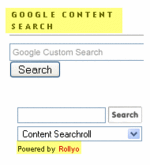Austin Ventures Acquires All Star Directories
![]() Austin Ventures has announced its acquisition of All Star Directories, a lead generation service for higher education.
Austin Ventures has announced its acquisition of All Star Directories, a lead generation service for higher education.
 Last year, Elisabeth DeMarse of DeMarseCo partnered with Austin Ventures on a $50M buyout fund to make acquisitions in the content space. This is the first deal completed under that partnership. DeMarse, of course, led the growth of Bankrate.com from $15M to more than $36M, so she knows something about the lead generation space.
Last year, Elisabeth DeMarse of DeMarseCo partnered with Austin Ventures on a $50M buyout fund to make acquisitions in the content space. This is the first deal completed under that partnership. DeMarse, of course, led the growth of Bankrate.com from $15M to more than $36M, so she knows something about the lead generation space.
DeMarse has been carefully analyzing consumer spends in recent months, to identify the market niches where aggressive growth is attainable. Indicates Elisabeth "I've reviewed categories as disparate as travel, education, housing, health and wellness, and all the categories of personal finance. When you look at these categories as a percent of HHI, there is a strong common denominator—that a unique visitor to a destination site in one of these categories is quite valuable to an advertiser. The acquisition of All Star Directories represents our first investment in the online education lead generation space.
Mike Mathieu, founder of All Star Directories, has built a very impressive company in five years, with an excellent management team. Doug Brown, President of All Star Directories, will retain his role leading that organization. I will serve on the Board, and continue to uncover investments for AV and DeMarseCo that fit with our strategy."
All Star has thirteen directories and revenues estimated at $15M. Its products, including All Criminal Justice Schools, All Business Schools and All Nursing Schools, among others, are lead generation applications aimed at the rapidly growing for-profit education segment.


















